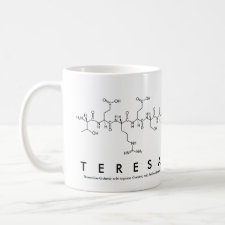
Authors: Lulinski P, Sobiech M, Zolek T, Maciejewska D
Article Title: A separation of tyramine on a 2-(4-methoxyphenyl)ethylamine imprinted polymer: An answer from theoretical and experimental studies.
Publication date: 2014
Journal: Talanta
Volume: 129
Page numbers: 155-164.
DOI: 10.1016/j.talanta.2014.05.029
Alternative URL: http://www.sciencedirect.com/science/article/pii/S0039914014004135
Abstract: A 2-(4-methoxyphenyl)ethylamine imprinted polymer (MIP) was successfully applied for the selective separation of tyramine. A computational analysis was used to predict the affinity of the polymer matrix towards tyramine and a preliminary experimental evaluation was made for the target analyte. Then the experimental analysis of polymer towards tyramine was continued. The binding sites were characterized with employment of the Langmuir and Freudlich models. After the optimization of solid phase extraction towards tyramine, the most appropriate systems for the extraction steps were chosen: methanol-water 85:15 v/v for the loading and the washing as well as 0.04 M aq. ammonium acetate-methanol 30:70 v/v for the elution steps. The biogenic compounds as tryptamine, serotonin, octopamine, synephrine, and l-tyrosine were used for the selectivity study on the basis of binding capacities of the analytes on the imprinted and the non-imprinted polymers. The theoretical approach to obtained results allowed to explain the adsorption selectivity of the tested polymer. Finally, the complex matrix of bovine serum albumin was used to show the usefulness of imprinted material for bioanalysis. The obtained recoveries showed the superiority of MIP over the commercial sorbent C18. Total recoveries of tyramine from spiked bovine serum albumin sample were determined as: 95 ± 2%, 14 ± 3%, and 1.9 ± 0.4% for the imprinted, non-imprinted, and commercial C18 sorbents, respectively
Template and target information: 2-(4-methoxyphenyl)ethylamine, dummy template, tyramine
Author keywords: Molecularly imprinted polymers, Tyramine, molecular modeling, solid phase extraction



Join the Society for Molecular Imprinting

New items RSS feed
Sign-up for e-mail updates:
Choose between receiving an occasional newsletter or more frequent e-mail alerts.
Click here to go to the sign-up page.
Is your name elemental or peptidic? Enter your name and find out by clicking either of the buttons below!
Other products you may like:
 MIPdatabase
MIPdatabase









